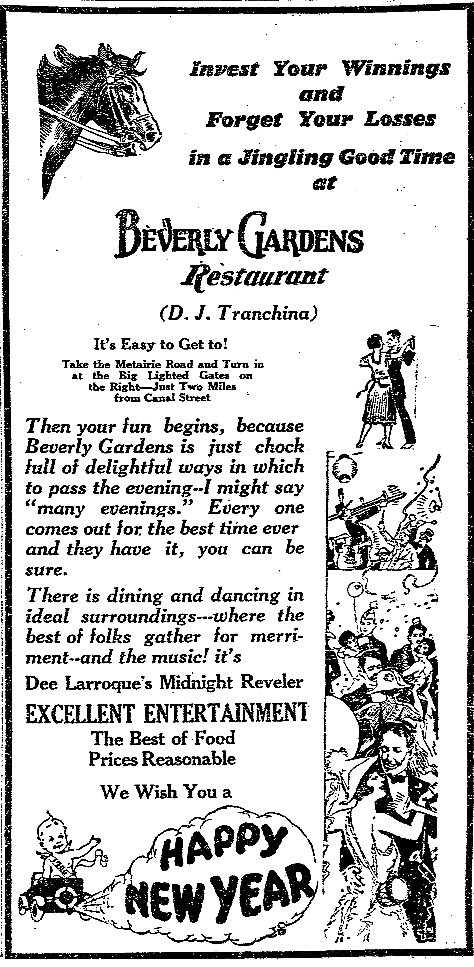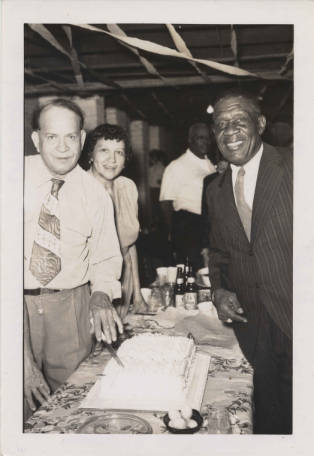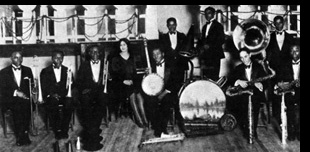|
Today in New Orleans History |
|
|
January 1


 Happy New Year as Metairie and
Gambling Grow The Jefferson Parish Police Jury opened the first section of Airline Highway
in 1927. It ran from Williams Boulevard to Shrewsbury Road and continued along Metairie Road to the city. Airline Highway
south of Metairie Road was not completed until 1928. With other new major roads built or proposed during the 1920s (Harlem/Causeway,
Transcontinental, Clearview Parkway) a commute to and from the city was much more palatable and so Metairie's first building
boom occurred in this decade. While new folks moved into Metairie gambling
was thriving. A 1925 Times-Picayune article noted that “Out in the suburbs, but patronized by Orleanians, are the
de luxe places” It described one of many – Dominick Tranchina's Beverly Gardens on Metairie Road where “the
gambling equipment is the finest” and an “excellent orchestra” fronts a “brilliantly polished dance
floor” and “a few hundred yards down Metairie Road” was the Victory Inn. “My, but that band just makes your feet Charleston and you can't keep still” reads a 1926 ad for
Beverly Gardens “Restaurant”. Great and highly popular bands such as the Original Tuxedo Jazz Orchestra led by
Papa Celestin and Armand Piron's New Orleans Orchestra with Peter Bocage were featured here. Jazzman Peter Bocage said the Victory Inn, located between Ridgeway Drive and Labarre, had a $100,000
bankroll. It opened in 1922. As a sign of the times a 1926 ad informed that “Yep! The Road is Paved all the Way Now!
Up to the Door of Victory Inn. Some newly arrived residents lobbied to remove the gambling establishments,
formed a committee, petitioned to incorporate as a municipality which could enforce laws which Jefferson Parish officials
ignored, and in 1926 were issued a charter for the town of Metairie Ridge. They chose C. P. Aicklen as their mayor who announced
that he would shut down the gambling houses. Gaming figures then lobbied to overturn the charter. In November 1928 the Supreme
Court of Louisiana decided that the city had been illegally incorporated because too few residents had signed the petition.
The only notable official action by Mayor Aicklen was the turning of a valve in 1928 at the 17th Street Canal near Metairie
Road which brought natural gas to all constituents via 9-mile pipe. Aside
from gambling in the 1920s, Metairie was relatively crime free but some ladies were upset by the actions of some visitors
as described in an August 19, 1927 article which read “Plans were discussed, to rid the streets and roads of the city
of Metairie of the numerous petting parties of young men and women of New Orleans who are using these dimly lighted places
as parking grounds, at a meeting of the Women's Civic Auxiliary of Metairie Thursday night at the home of Mrs. G. L. Sheen,
Friedrichs Avenue”. This January 1, 1926 TImes-Picayune advertisement tells us that "Beverly
Gardens is just chock full of delightful ways in which to pass the evening" and notes the "best food" and dancing
to Dee Larroque's Orchestra while making no mention of the gambling. In a 1959 interview Peter Bocage
recalled playing at Dominick J. Tranchina's Beverly Gardens, Victory Inn, and Tranchina Night Club – all on Metairie
Road. “There was plenty of money in those days. We used to make high as twenty, thirty dollars a-piece, just collections”
[tips] from gamblers. “Money was like water with them”, Bocage said.
 

And You won't pay a penny more! To receive an update for each day in New Orleans history,
join our facebook page - Today in New
Orleans History
The first Sugar Bowl game was played there on January 1, 1935,
against the Philadelphia Temple Owls. The last was on December 31, 1974 when Nebraska beat Florida 14-10. Emile Weil submitted plans for the Touro Synagogue at 4238 St. Charles Avenue on January 1, 1909. See
also http://www.tourosynagogue.com/about/our-history/. Photo of Judah B. Touro at http://louisdl.louislibraries.org/u?/LPS,554. Dedicaton on building at http://farm1.static.flickr.com/92/233407169_99b98a415d.jpg?v=0.
|
|
|

To receive an update for each day in New Orleans history,
join our facebook page - Today in New
Orleans History.
Analytics |

 In 1954 "Lincoln Beach opened to a throng of 10,000 eager citizens, who spilled onto the elaborately landscaped midway
and gathered around the stage where Papa Celestin's jazz band played" noted New Orleans Magazine. He passed away
not long after on December 15, 1954.
In 1954 "Lincoln Beach opened to a throng of 10,000 eager citizens, who spilled onto the elaborately landscaped midway
and gathered around the stage where Papa Celestin's jazz band played" noted New Orleans Magazine. He passed away
not long after on December 15, 1954.

